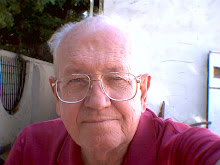Pesented here is Chapter 18. Truth. of the e-book Bye-Bye Sweet Liberty.
“One of the most striking differences between a cat and a lie is that a cat has only nine lives.” Note on Pudd’head Wilson’s calendar.
[It is the so-called simple things that often trip us up.]
From childhood it seems we have all known what the word truth means. Yet in the United States today, we find ourselves reeling, and we know it is time to examine our notion of what is truth.
The dictionary mumbles something about conformance with facts, but what does this mean? Digging deeper, delving somewhat into philosophy and history, we come up with two prime definitions: 1) That which most people agree upon, and 2) Accurate reporting. The first definition is supported by a group of philosophers who denominate themselves Pragmatists. Well-known Pragmatists who have had a marked influence in law and education are Oliver Wendel Holmes and John Dewey. The second definition has been in common use throughout human history, but was formally analyzed and written upon extensively by physicist Karl Popper.
OK, so what?
Well, the first definition leads to situation ethics. The second definition describes modern science. The following example illustrates.
Imagine 200 people sitting in an auditorium. There is a single window through which the outside can be observed. Suddenly profuse drops of water are seen falling outside. Several people comment that it is raining. All arrive at the belief it is raining. For them, the statement "It is raining," is a truthful statement. Suddenly a person enters from the outside and says, "Hey, did you know a pipe has burst on your roof?" This prompts many in the group to examine the situation more closely. Some go to the door and peer out, some go to the window. They seek confirmation for one or the other of the two opposing ideas: rain or burst pipe. If the person has reported accurately, he has told the truth. If not, he has lied.
In the story The Emperor’s Clothes, the little child who finally remarked upon the Emperor’s nudity was reporting accurately -- that is, the child was telling the truth.
This is not a matter of small consequence. Millions of people in China starved to death believing in the policies of their beloved Mao. To them the truth was what the great leader told them. He could never be wrong. Their revolution was good and virtuous. Anti revolution was evil. They would meet their grain production quotas, and they would exceed them. To do so they shipped practically all the grain they had, leaving none for themselves.
In the example above, we see how a general consensus can be construed as truth, given human emotion and the comfort derived from widespread agreement. But this definition is fraught with peril. If truth is thought of in such terms, then it can be manipulated. This leads to ideas of indoctrination (Hello, Dr. Goebbels), Maoist-style starvation, and Salem witch trials.
The only way to establish truth is to constantly test it from all available vantage points. Truth must be based in objectivity, not in ideology. This is the way of science. This is the way of rational, enlightened human beings.
Subscribe to:
Post Comments (Atom)

No comments:
Post a Comment